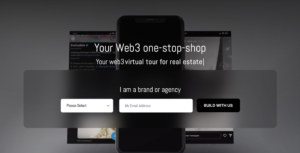
Meet Nick Kovacich, a young inspiring Business Developer and Product Strategist at Exclusible.
The drive behind his career
He started his career at the age of 18 in a blockchain startup revolutionizing the intellectual property market, while evaluating and transacting patents on the blockchain market.
Surprisingly, he describes the fact that he didn’t know much information about the blockchain market and its use cases, however:
“I was immediately struck by its potential, especially in terms of decentralizing and disrupting inefficient systems that we are accustomed to today”
Later on, he interned at one of the most luxurious German brands – Montblanc, where he was in charge of exploring the NFT projects with the board of directors of the brand and the Richemont Group.
“Trying to introduce such innovation in a such a traditional sector was a challenge, but the potential was enormous”
After a couple of months, he joined Exclusible, which at the time focused on blockchain use cases for the Luxury industry.
Today Exclusible is one of the key players in Web3 when it comes to Web3 loyalty programs via NFTs and Metaverse Experiences, as Nick shared his insights.
How did you get to experience yourself Metaverse?
Nick shares his mind-blowing experience describing the Metaverse world as an immersive internet, this time linking it closer to reality, due to the sophisticated internet platforms displaying an immersive 3D experience.
“Today most platforms are built on the latest software, Unity and Unreal Engine 5, which give much more appealing and photorealistic experiences”

His first photorealistic metaverse experience was using Spatial.io virtual reality, which guided him towards what the future holds: commerce, gaming, and social interactions.
On the other hand, VR and AR played a tremendously crucial role in the commercial use cases, describing his work at Montblanc as graphic quality-oriented, especially if addressed to multiple important users.
What were the most important projects?
Nick expresses his passion for working with 2 supercar brands, Bugatti and Alpine, despite the different perspectives in the project making.
The NFTs perspective, it was massive in the marketing and campaigns strategy:
In fact, the NFTs reached a resale price 5 times higher than the initial sale price, and Bugatti and Asprey were able to build a strong digital community.
When Bugatti launched a collection in collaboration with Asprey, Each NFT is linked to a physical art piece representing an iconic Bugatti car, made by Asprey Studio.
After the insane success displayed at first glance, They launched free NFTs to create a strong base for their digital community.
Fans had to interact with the brand’s Twitter page to secure a free claim, the Twitter page very quickly reached over 30.000 followers and the collection sold out in a matter of seconds.
Consequently, Alpine sold NFTs on top of their free collections, for the closest fans. Alpine now has a strong digital community supporting the brand and built this community in a much more engaging way compared to traditional marketing campaigns.
From a Metaverse perspective, with their 3D studio Polycount and new photorealistic platform Web3 worlds, they successfully worked with 30 Fortune 500 companies and created some truly remarkable projects.
Recently they developed an entire immersive football stadium during the latest World Cup in collaboration with luxury watch brand Hublot.
What kind of strategies would you possibly recommend to startup businesses?
When dealing with most of the Web3 startups, the successful ones come with a real problem, although startups start with a solution they can provide and look for a problem to solve for their clients.
“My advice is actually to understand what problems your potential clients might have, focus on one problem and solve that one very well, without precluding other potential paths”
For instance, Exclusible had a well-defined targeted clientele, launching NFTs for Luxury brands and now we work on customer engagement via Web3 loyalty programs and immersive experiences.
Technology plays a huge part in the game, but solving a problem stays the main priority for the clients and generates customer engagement.
How do you see it implemented in the next 5 years from now?
Suggestions strive for VR performance, 5 years from now, however, it still requires advanced hardware:
“AR is already taking over in many industries, retail, entertainment, sports, and more”
Multiple retail brands focus on VR access and immersive experiences, which will become more mainstream when the next points will be surpassed.

what is the process of gamification?
Gamification is the process of integrating game mechanics and design elements into non-game contexts, such as business processes, to engage and motivate users.
In community building, gamification can be used to incentivize user participation and reward them for their contributions.
“Brands need to understand that the era of top-down advertising on social media is slowly fading away”
Young users do not pay attention anymore to ads, and their attention span is decreasing rapidly, therefore, they’re now focusing on building communities, and groups based on their interests, what are known as digital communities.
What are the main challenges and solutions?
On the web3 loyalty side, the challenge is certainly enabling brands to seamlessly introduce this new approach into their existing marketing mechanism and engagement systems.
In addition, there is a constant risk that comes with brands launching NFTs because there is high competition, without comprehending enough about their implications and their actual use cases.

“Once the users try out the experience, the engagement metrics we have recorded so far have been outstanding”
To solve this issue, Exclusible focuses on easy onboarding, all the experiences can be tried in a few clicks, from all devices, mobile, computer and VR, on the other hand, Metaverse platforms are gaining quickly more users but there is still long way to go.
Moreover, thanks to digital collectables capabilities, the promotion area adopted is rewarding users with digital collectables when they join a metaverse experience, incentivizing users to try it and adding a new member to the brand’s digital community.
Carina Schuster is a multilingual tech and science editor for The London Financial & a podcast anchor and producer for SciTech Suisse, covering groundbreaking stories in the matter of disruptive technology developments and interviewing top experts in AI, the Metaverse, Web3, Blockchain and scientific research. Throughout her experience as a journalist in the editorial and digital worlds, she was selected by CNN Money Switzerland in 2020 as a digital producer intern and has demonstrated a collaborative and creative spirit, working alongside talented journalists and delivering impactful stories with the main aim of simplifying the complexity of technology.
